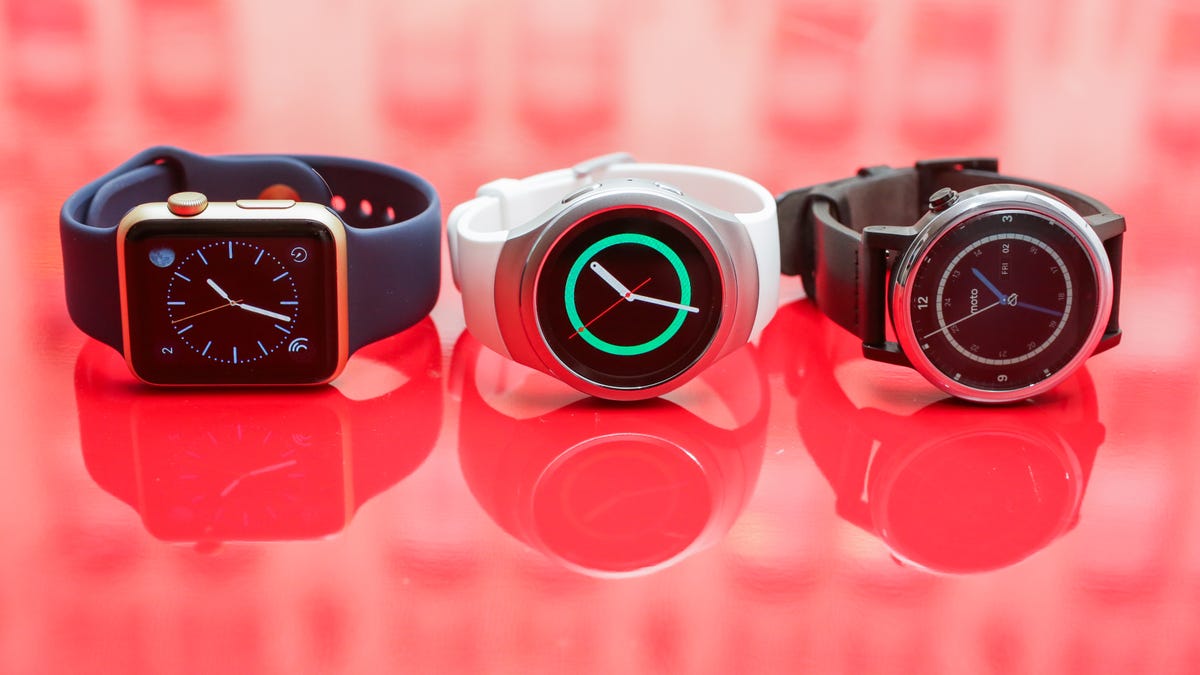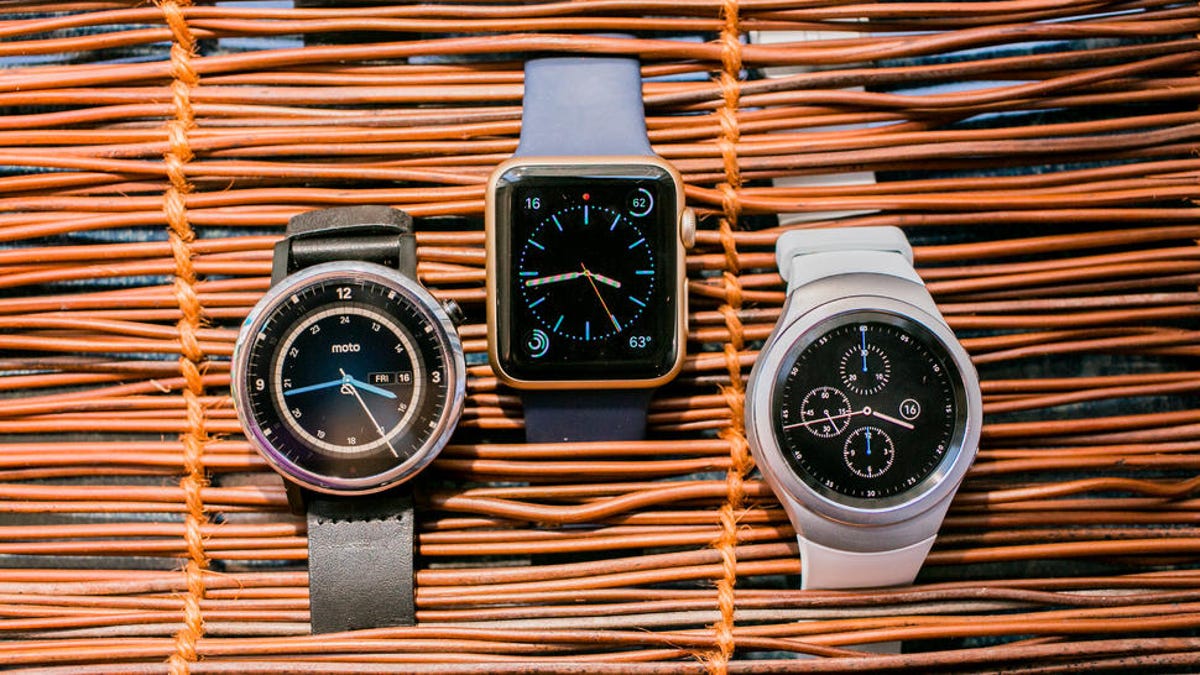Of all my many desires in life, a watch with Swarovski crystals has never been one of them. Diamonds and jewels aren’t really my thing, but at CES 2016, when I tried on the new blinged-out Huawei Watch that’s geared toward women, I couldn’t help but feel beautiful. I was like a bride trying on her wedding dress for the first time. Next to the homely Samsung Gear S2 I was wearing, which I had thought looked just fine up to that point, I could see clearly that the future of smartwatches was in the hands — well, technically, on the wrists — of women.
Growing up my mother always wore a watch and I (being her smallest-biggest fan) always wanted to wear a watch, too. My watches often reflected my biggest interests at the time — memorable models include a Tweety Bird timepiece with a plastic baby pink wristband and an Oakland A’s one that had a mish-mash of the team’s logos emblazoned on the straps like haphazardly placed stickers on a newspaper rack. Most recently, I bought a Swatch with a shiny black band and roman numerals on the face.
When I walked into the Swatch store I had an idea of what I wanted, and with the abundance of choices plastered along the tall, white walls, I walked out a happy customer. But had I been shopping for a smartwatch, it would’ve been a different story. If a similar experience could be had for smartwatches, one that offered many choices in a variety of designs, from meek demure models to flashy bejeweled ones, I think more women would be willing to invest in one.


Yuck.
Sarah Tew/CNET
Where are the women’s smartwatches?
Watches, unlike phones, aren’t one-size-fits-most, and not just literally. A watch, as utilitarian as it is, is a fashion statement and an extension of personal aesthetic. Stereotypically, fashion is a “feminine” interest. Regressive stereotypes aside, it is true that most people care about the way they look, accessories included. It would make sense then for a healthy variety of feminine, stylish smartwatches to exist.
That is not the case. Some (including me) would argue that many smartwatches have no sense of style at all. But I digress. “Women’s style” watches, extending past the basic rose gold option, are slowly beginning to catch on. It’s not that smartwatches haven’t been marketed towards women, they’ve just failed miserably to highlight how the device can be advantageous to a woman’s everyday experience.
Convenient for whom?
A popular misconception is that checking your phone for the time is just as easy as checking a smartwatch. That may be true if your phone is easily accessible; the convenience seems null when every item of clothing you own has multiple pockets that can properly house your phone. If you don’t have that luxury — say, you wear dresses or skirts that don’t have pockets — then digging up a phone from a bag isn’t as convenient and quick.
In case you aren’t aware (guys, I’m looking at you), the pockets on most women’s clothing are so small they’re basically pointless. They’re too tiny to carry much of anything, and they can barely fit an entire hand, let alone accommodate a typical 5-inch phone. Comfortably storing a phone on your person is an option for some, but not all, most notably not all women. Carrying a phone often means also carrying a bag. As someone who loses things too often and therefore doesn’t like carrying a purse (unless the outfit necessitates one) that’s a major drag.
Having a smartwatch that allows me to quickly check my notifications, instead of switching my attention to my phone, is useful for me. If I get a notification it also — very importantly — helps me avoid dumping out all of the contents of my purse in a frantic search, or doing the last half of the Macarena in an effort to get my phone out of whichever pocket I managed to put it in this time.


I’m all about gender-neutral accessories, but these look more like fashion-neutral embarrassments.
Sarah Tew/CNET
Fashion freedom
When I asked a co-worker who wears a watch why she didn’t own a smartwatch, she lamented the fact that the same amount of money spent on an Apple Watch could be spent on a classic timepiece, one that can be handed down to your children or grandkids. The value of a nice $700 (non-smart) watch doesn’t drop when another model comes out, like it does with smartwatches. Though I agree, I’d say that a smartwatch is a different type of investment. It’s not a normal timepiece you pass down for generations, but it is one that you can highly customize unlike any other analog watch.
The fashion possibilities with a smartwatch could be endless. I constantly changed the watch face on the Gear S2 depending on my mood or outfit; it was like a new type of malleable accessory I got to change at whim. I tried the Apple Watch for a few weeks but I didn’t like the watchface selection as much as the Gear S2’s, so I settled with the boring all-black default.
I’d even invest in extra bands, if I liked any of them. The few Samsung and Apple alternatives are obviously made with men in mind — except for the token pink or designer brand choice, of course. Ideally, the variety of straps would rival those of an analog watch. Though it might seem like a small detail for some, it’s a big deal for those who care about this type of thing.
Speaking of big deal, most smartwatches themselves are pretty big. Even the few models that are in smaller “women’s sizes” tend to look comically oversized on petite wrists. Slap on a tacky watchband and it looks like you’re wearing a Happy Meal toy on your arm.

 Enlarge Image
Enlarge ImageTrust me, it looks better in person.
Sarah Tew/CNET
Not a phone-replacement, a supplement
Some have written off smartwatches as sub-par devices with half-baked capabilities that are superfluous if you already have a phone. I disagree. I think there’s great potential for them, especially for the tech-savvy woman, and the convenience of having a window to important information directly on your wrist doesn’t have to be a dull one. The devices can be as cute or cool as any other watch, manufacturers just have to get them to that point first.
Wristwatches were invented because pocket watches took up too much space in pockets that could be used for other useful things, like candy and chapstick, and the same logic applies with smartwatches. Why bother squeezing your phone into your pocket, or carrying it around like a toddler with its pacifier, if an easier solution is available? The convenience of a smartwatch is real, but like many things in life, they’re just not for everyone, and at this point, they’re not designed with everyone in mind, either.
If manufacturers stepped up their fashion appeal and actually created a watch that women would want to wear, that could very well change.



